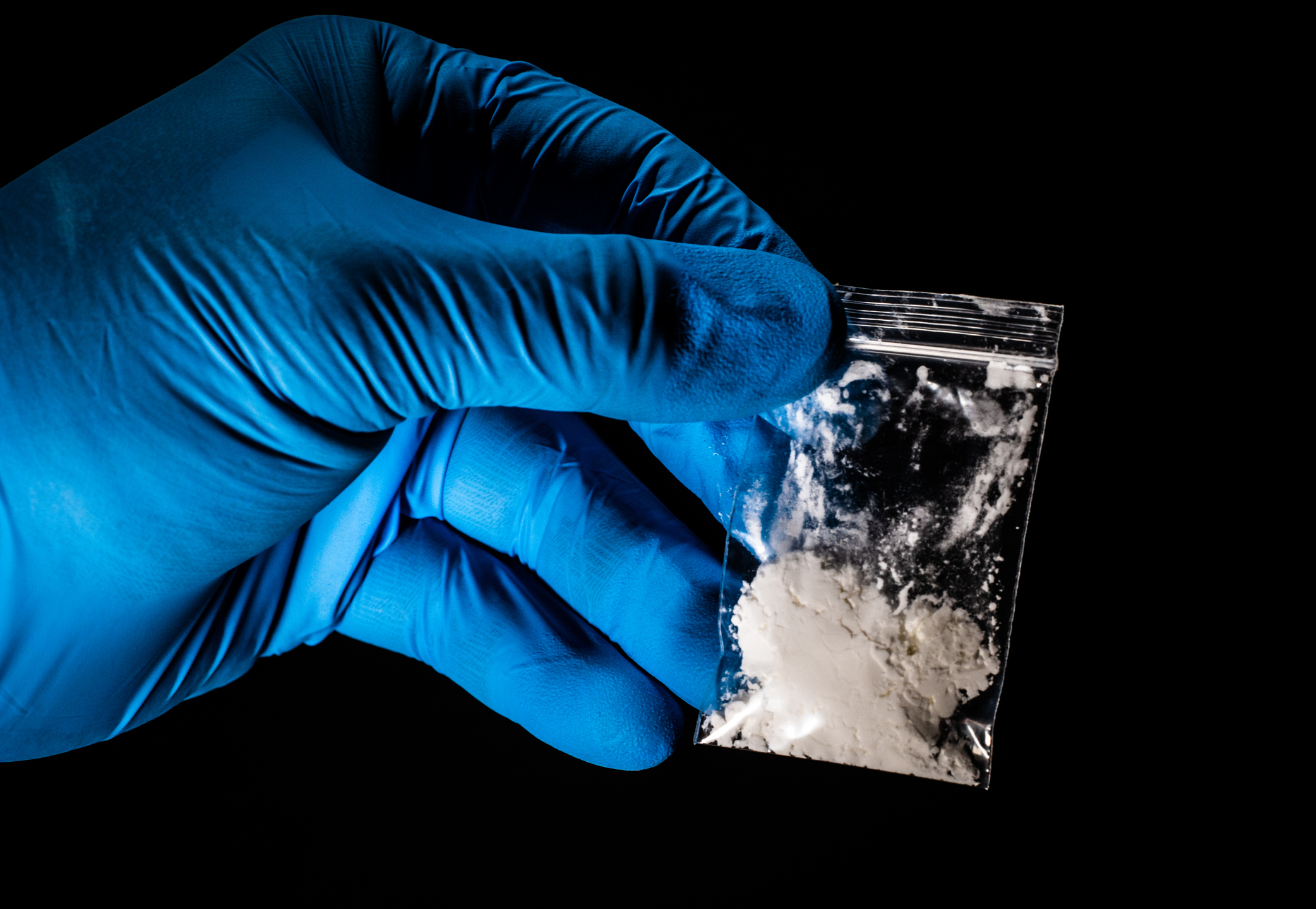Fentanyl is the most dangerous drug in the country. In a very short amount of time, it has swept the nation into a devastating epidemic of overdoses and addiction. Its existence has created a public health crisis in the United States as more and more people who use fentanyl and other drugs become affected by the dangers it poses to their daily lives.
For the family members and loved ones of those who struggle with addiction, it’s helpful to have resources that can create avenues to have tough conversations with the people you love who are living with this disease.
When a person stops taking fentanyl, they will likely experience severe withdrawal symptoms which can last days or weeks. In this post, we’ll share how to spot fentanyl use, what fentanyl addiction treatment looks like, the stages of the fentanyl withdrawal timeline, and how a person can prepare to put their fentanyl addiction behind them and kickstart their recovery.
What is Fentanyl?
Originally designed to be used in a controlled medical setting, pharmaceutical fentanyl is a potent synthetic opioid used to treat severe pain in late-stage cancer patients. Its potency is what makes it effective in treating severe pain, but that also means it’s highly addictive. It can be extremely dangerous to use in any form in a non-medical setting, and we are now seeing a dangerous trend of illegally synthesized fentanyl hitting the streets.
Fentanyl and fentanyl addiction has caused a drastic increase in drug overdoses and deaths in recent years, particularly in young adults across the nation, most of whom are unaware they ingested the drug in the first place. From 2020 to 2021, more than 100,000 Americans died from a drug overdose, with over 64% of those deaths as a result of synthetic opioids like fentanyl.
Fentanyl Laced Drugs
There is a large amount of illicitly manufactured fentanyl on the streets and drug dealers are mixing it into other drugs. Fentanyl can be found in cocaine, methamphetamine, heroin, and prescription pills to increase their potency and addictiveness. Fentanyl is nearly 100 times stronger than morphine.

Many people don’t even realize the drugs they are buying and using contain this dangerous synthetic. Fentanyl is odorless and has no taste, making it difficult to determine if any substance contains it.
In its powder form, fentanyl resembles most common powdered drugs, like cocaine or heroin, but can also be made into pills that resemble prescription opioids or other party drugs. In its liquid form, fentanyl is commonly used in eye drops or dropped onto small candies.
The DEA states that the majority of these illicit synthetic opioids come from outside of the United States in the form of counterfeit prescription pills, like Xanax, Percocet, and Vicodin (also referred to as Rainbow Fentanyl).
Effects of Fentanyl
The effects of fentanyl include pain relief, relaxation, drowsy or dizziness, nausea, vomiting, and respiratory distress, particularly by reducing breathing rates to dangerously low levels.
People can overdose when they take fentanyl in high doses or by themselves; the effects happen fairly quickly and with no one around to administer Naloxone or call 911, an overdose becomes dangerously possible.

How to Determine the Signs of Fentanyl Use
If you feel your loved one’s life is at risk and that they may be using fentanyl (knowingly or otherwise), there are ways you can determine the signs of fentanyl use.
Here are some of the physical signs of fentanyl use to watch for:
- Chest pain or heavy breathing
- Confusion and disoriented
- Extreme fatigue and dizziness
- Fever or chills
What is Fentanyl Addiction?
Along with the physical signs, there are some emotional and behavioral signs of fentanyl use that a person may display without realizing it. These include:
- Social anxiety and withdrawal
- Lack of interest in physical appearance or wellness
- Fatigue and disinterest in activity
As a close friend or family member, you likely know their physical limitations, energy levels, and general disposition in various social settings. Keep a close eye on how they react to social and work environments, especially if they have a sudden decrease in physical activity or display a lack of hygiene or taking care of themselves.
The more addicted a person becomes, the more their behavior will change. It’s difficult to catch the signs of fentanyl use because it can manifest in different ways, and you can’t always narrow it down to one problem. Pay attention to behavioral patterns or recurrent symptoms that have recently caught your eye and feel unusual or problematic.
Treating a Fentanyl Addiction
Because of its potency, fentanyl is highly addictive. Treating any addiction is best done in a care facility, removed from the temptations of drug use, and with access to the resources necessary to detox in a stable environment.
Successfully treating a fentanyl addiction requires the help of medical professionals at a specialized treatment center. This type of environment provides a safe, secure place for people to detox while having access to emotional support and addressing the uncomfortable physical symptoms of withdrawal, which in the case of fentanyl can be fatal if not supervised by a medical professional.
After the symptoms have subsided, clients then transition into therapeutic immersion to kickstart recovery.
Fentanyl Withdrawal Timeline
Fentanyl is one of the most addicting substances partially because of how quickly a person feels the effects when using it. One of the most dangerous characteristics of fentanyl is its ability to act on opioid receptors almost immediately after administration, making fentanyl addiction extremely common. However, this also means that the fentanyl withdrawal timeline is shorter than other opioids.
The first withdrawal symptoms will likely be felt within 8 to 24 hours after the last time a person used the drug. These symptoms will feel like mild discomfort at first and rapidly get worse. Early symptoms can include, yawning, restlessness, sweating, anxiety, sleeplessness, and flu-like symptoms. From there, the withdrawal symptoms will only get worse. After the first 24 to 48 hours, fentanyl withdrawal symptoms can include diarrhea, nausea, vomiting, high blood pressure, blurry vision, and rapid heart rate. After 72 hours, symptoms usually begin to improve, but likely won’t disappear completely for 7 to 10 days.
The fentanyl withdrawal timeline can vary from person to person and depends greatly on how long fentanyl was being abused.
Fentanyl Addiction Treatment Options
Finding appropriate addiction treatment is crucial, as it helps a person place themselves in a safe environment surrounded by medical professionals with their best interests at heart.
One should never attempt to undergo the fentanyl withdrawal process alone, as this could lead to unforeseen side effects and dangers. It is highly recommended that individuals or families seek out fentanyl addiction treatment programs with a medical detox so that doctors and nurses can monitor the client and reduce opioid withdrawal symptoms to make the process as safe and comfortable as possible. Additionally, solo withdrawal increases the odds of relapse and continued use, making it not only dangerous but likely to fail. In seeking an appropriate group of individuals to have one’s back, a person can maximize the effectiveness of their treatment plan, and get back to doing what they love sooner.
A common treatment program would start with a medical detox (for active users), followed by residential treatment. Once complete, the individual would step down into an aftercare program that would include outpatient addiction rehab treatment programs and/or sober living. For more information, please call 877.799.1985 and a member of our care team will be able to assist in making a decision about treatment.
Providing Support for Your Loved One
The conversation around fentanyl use and its threat to people’s lives is a necessary one. Creating an action plan is a positive, effective way to ensure you are doing everything you can to support your loved one as they find ways to seek treatment and help for their addiction.
If you know someone who is struggling with addiction and uses opioids in non-medical situations, there are suggestions you can make to ensure their safety and to help support their road to recovery.
Confronting Someone Addicted to Fentanyl
Confronting someone addicted to fentanyl can be a delicate situation, as they may be in a state of denial or defensive about their behavior. It’s important to approach them with empathy and compassion, while also expressing your concerns for their health and well-being. Encourage them to seek professional help and offer to support them through the recovery process. It’s important to prioritize your own safety and boundaries and seek guidance from an interventionist if needed.
Knowing the Signs of a Fentanyl Overdose
It’s most likely not going to happen when you are around, but it’s still a good idea to be able to identify opioid withdrawal symptoms. These include:
- “Pinpoint,” or small pupils
- Loss of consciousness, sleepiness
- Slow breathing or loss of breath
- Limp body and clammy skin
In the event of an overdose or if you suspect one, call 9-1-1 immediately.
Make Sure Naloxone is Available
Naloxone is a medication used to reverse an opioid overdose. It can reverse and block the effects of opioids, including fentanyl, heroin, morphine, and oxycodone on the brain and restore breathing after a life-threatening respiratory depression.
Naloxone can be given as a nasal spray, injected into a muscle, under the skin, or into a vein. The nasal sprays are the preferred method because they can be used by family members, loved ones, or bystanders who haven’t had any training or experience using them. In many cases, it can save someone’s life.
The Fentanyl Epidemic is Real
We know the overdose rate in young people nearly doubled in the years leading up to the pandemic. As young adults face more adversity and struggle with their own mental health, it’s likely some will seek street drugs to cope with their lives.
As fentanyl and other opioids become more prevalent in the drugs people are regularly accessing across the nation, continuous education on the dangers of using it has never been more essential.

In Los Angeles alone, there has been a significant increase in fentanyl-related overdose deaths, especially among young adults. Countless news stories are highlighting the burden and dangers of fentanyl in our community. We’ve seen a spike in fentanyl overdose deaths in teenagers who unsuspectedly purchased party drugs laced with fentanyl, urging caution to parents to educate their children on this dangerous drug and know the signs of opioid drug use and overdose.
Fentanyl Addiction Treatment at Clear Behavioral Health
At Clear Behavioral Health, we specialize in fentanyl addiction treatment. If you or a loved one are in need of help, call us today and speak with one of our dedicated team members. We offer medical detox and residential rehab to support those who are ready to break the cycle of addiction and start the journey to get sober.
The opioid crisis has destroyed families all across the world, but it doesn’t have to be that way. Please don’t hesitate to reach out in order to help you begin your recovery journey.
